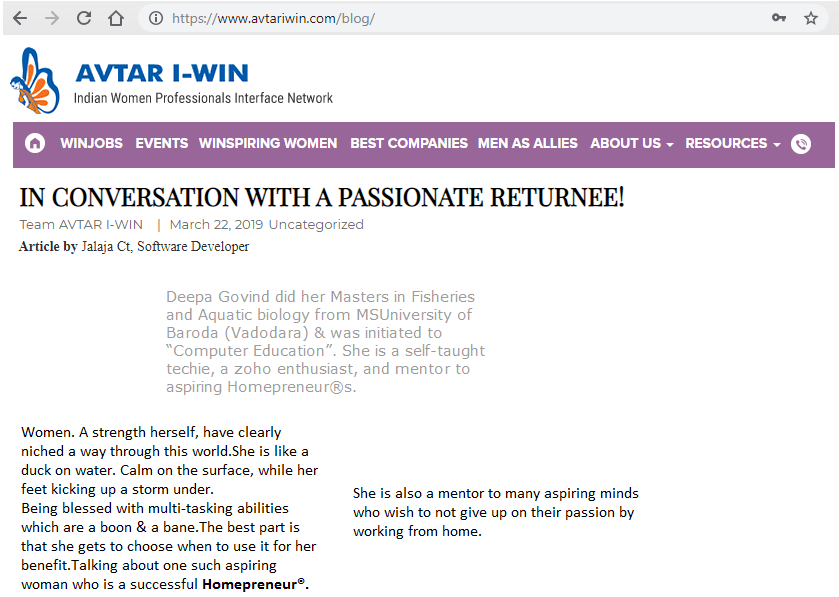
Thanks to Jalaja of https://museinnovations.wordpress.com , and Team Avtar-IWin for making this happen ?


Homeprenuer®, Entrepreneur working from home.
Professional Working From Home

Thanks to Jalaja of https://museinnovations.wordpress.com , and Team Avtar-IWin for making this happen ?

Thank you, Bhumika Ambavani for having feature me at the Bangalore Insider… 2019 has kicked off good.
Read at Bangalore Insider
Nailing The Balancing Act – Women Freelancers In India, A Webinar brought to you by Inc42 in association with PayPal India

More and more businesses are warming up to Zoho Creator, and developing apps in all sizes. These apps could be as small with only 3 forms and 5 reports, or as large with 20+ forms and 60+ reports, as the business demands.
Thanks to subforms, we are able to create related lists against the parent record with just a few drag and drops. This gives a unified approach to collect and see the data, without having to switch through multiple screens and reports.
However, subforms tend to pose a different set of problem. At the cost of easing data management, it adds total to the record count on your zoho creator user account. Let me exemplify.
(Click to zoom in the picture) I know, it is hazy, but then.. you get the idea..don’t you?

Main Form : Candidate ( Counts as 1 record)
Subforms : Address , Education, Employment
Assuming there are 3 rows of data, for each subform, we end up with a total of 9 + 1 = 10 records for each Candidiate entered into the system
Makes sense ??… Well, let us see some sample records

One candidate accounts for 10-15 records on an average.
Each Zoho Creator subscription is entitled to a certain volume of records.

For business that deal with 100’s of records (candidates) on a daily basis, the total record count could rise exponentially within matter of hours. And, hit the record-limitation resulting in business operations to a grinding halt, until you purchase additional records as add-ons, or switch to premium version that allows unlimited records – Price and Feature comparision sheet here
Another option would be to delete past records, to allow space for new incoming records. But not all businesses can afford to purge “past data”. Eg, Legal firms tend to keep past data as late as 5-7 years.
Let us use a combination of services. Demo here illustrates the final outcome
This will not only free up record count, but will also move redundant data out of the system.
Each file archived into ZDocs involves 2 ZohoDocAPI calls.
Working from with Zoho Creator. Read to know how Deepa & Jaysree did it with some dedicated self-learning
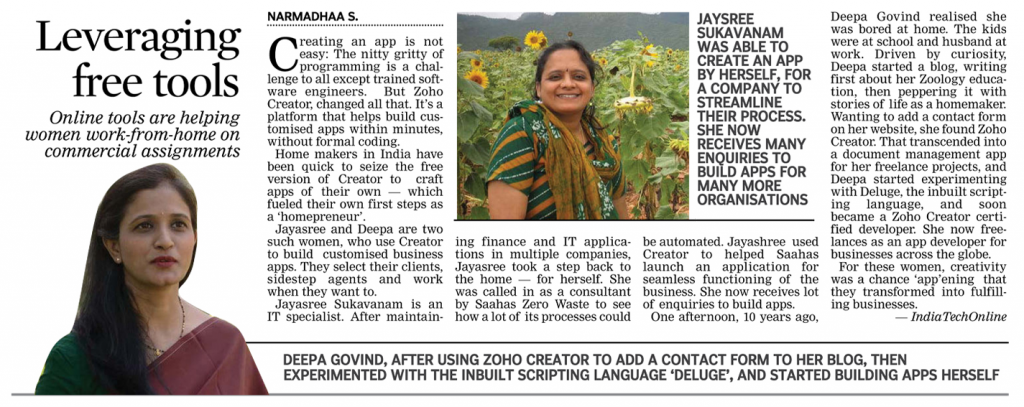
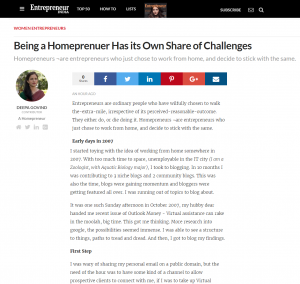 An invitation of a lifetime.
An invitation of a lifetime.
I would read Entreprenuer on the stands, and make mental note of the contibutor’s profile that appears as a small box at the end of each article, and feel very very jelous about them. There is something oh-so-perfect about these authors, that their write up has made to the print edition of the most acclaimed Entrepreneur Magazine.
And the, I sigh !!!
But, last week, I was in for a surprise.
Thanks for Team Zoho, They had an invitation for me, on behalf of Entreprenuer.com, and I just grabbed it on all fours. For those who know me, this is indeed a rewind. But. for those who don’t, hope to kindle your sleeping spark, so that you too can find your mark on the things that you, and only you do best.Read More

The title had me confused with J.Lowe’s “The World’s First Trillionaire”, which apparently deals with a journalist’s inquisitiveness on the ways and means used by the protagonist to become a Trillionaire in his own right. I now have this in my wish list, to read for later.
That said, Ms.Sapna Jha’s debut work, “The First Trillionaire” is a refreshing read.. There is lot of emphasis on hard-work, dedication to duty, commitment to family etc. But, the unrelenting & blind faith, on the grand-design at the hands of Lord Supreme (Ma Dugra) tops them all. Although a bit cliché’d for many, such blind faith have been a life-saver to those who have passed though the darkest hours of their lives. It’s a choice to believe in (or not to). Let us keep it that way.
The official synopsis is available here.
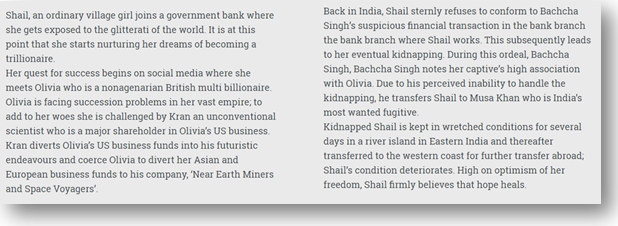
In India, a single mother raises a girl child in a rural village, by home-schooling with help of the local schoolmaster. The child grows up to an intelligent woman who knows how to use the knowledge she has gained over her growing years, and also strongly carries forward her mother’s unrelenting faith on Goddess VaishnoDevi of Katra. Born to poverty, none to the family except for mother-daughter duo, reunion with the extended family once lost ,pre-ordained to inherit unprecendented wealth is this child’s destiny taking shape.
The language is simple, with easy to understand words, and easy to follow flow of events. As a translated version, this book still retains some dialouges from the vernacular language to keep upto the spirit of the characters.
The author has made a deliberate choice to take us though the memory lane … walking with the characters. The timeline spans from 1967 to 2016, for the reader to relate to the present day events, its history, and the repercussions to come in the near predictable future to those involved in these events.Braiding time-strands, with oldest character being 94 yrs, and youngest at 25 yrs, is no ordinary feat. That is three generations in a family, and a league of few other rustic, bureaucratic & mercenary characters in between. Each one’s journey until present time is essential to understand the precedence and purpose of present day events.
While this is a welcome element for seasoned readers, it can get a bit overwhelming for those who are just picking up on the habit of reading for pleasure. For those of you, advice scanning the pages to get the big picture on your first read. Should you feel satisfied after completing the book, come back and read again to understand how the time-lines merge. I promise, you will enjoy the 2nd read better.
I have a feeling that the nuances of banking policies and attention to detail on Science, space research programs etc in the plot has a lot to do with Alok Jha (translator , author’s husband) association with the banking sector and his association with science. Kudos, great teamwork. You both sure make a power couple.
I wouldn’t go to the extent of calling this as an inspirational-read. Instead, would say that this makes an interesting tea-time read, or a kind of book you would want to hold on to while travelling (esp via train / bus). Takes your thoughts away from the humdrum of life, and leaves you with a satisfaction of having spent the time reading a good crime-mystery-thriller.
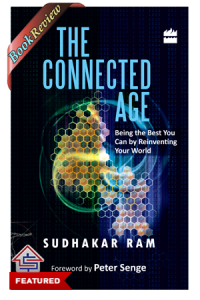 Book reviews are fun to do, especially when you love to read, and love what you read. These were my thoughts exactly when I received my copy of Mr.Sudhakar Ram’s “Connected Age”.
Book reviews are fun to do, especially when you love to read, and love what you read. These were my thoughts exactly when I received my copy of Mr.Sudhakar Ram’s “Connected Age”.
Little did i know at that time, I am in for a reading-shock of mammoth proportions.
The title leads to the assumption that this book is about technology, internet of things, Social media connects etc etc.Well, you are correct to assume so. Mr.Ram, being a technical person, it is only natural to have technical jargons as part of his everyday vocabulary.. However, not on the context of “Technology” of things…. but.. more so on the “Philosophy” of being….
Isn’t this THE typical “philosophy” pitch?..Be the best, Bring out the best, Reinvent yourself etc etc. Well well.. not wrong either. Book tells exactly what it says .. but not the way we are used to hearing them from God-(wo)men, and Self-styled Gurus. Just don’t let that cloud your perception. Keep an open mind.
The Published version of synopsis here – @ The New Constructs, Mr.Sudhakar Ram’s blog.
My version of the Synopsis
As much as we would stop to smell the roses, the stench of the nearby sewage is impossible to ignore. Same applies to the ecosystem (a.k.a THE Earth) we live in.
As much as we wonder over the advances in technology that has enabled us to lead a (perceived) better lifestyle, we fail to ponder over the perils of continued use of the same technologies.
Just as energy can neither be created, nor destroyed, but can only be converted from one form to another. However, in our case, we humans since the 21st century have been converting THE Earth’s resources from one form to another, with unforeseen & undesired consequences (… eg..think “..Plastic…”).
Now is the time, to Sit Up, Reflect on (consequences of the) past actions, Act up (to right the wrong) at an individual level (… think… Ban Plastic..),
Diligent and socially conscious individuals can be our crusaders of change for better, by starting at grassroot level, ie.. personal – professional – community level – corporate level – Villages / Panchayats / Municipality level collaborative governance – state level – national level – and last but not the least, bring change at a Global Level.
Short Review: This book is for the tech savvy-philosophers, and none otherwise.
Long Review:
There are 2 types of readers. Those who read for pleasure & those who read for purpose.In addition to the generic nature of the book, one is able to enjoy the reading experience solely based on the individual’s know-how of the things addressed in the book. Such a book is too serious to be used for reading-pleasure, and too light to be considered for a user-manual. The Connected Age, is one such book.
Philosophy has a strange way of sneaking into our thoughts. It wedges within, by the proverbial “foot in the door” technique when we are either disappointed, or hopeless, or both.
I believe, Philosophy (for the common man) is our psyche’s defence mechanism to deal with rejection. As much as despair pins us down, hope lets us soar.
“The Connected Age” is not for light reading of any sort. Heavy use of technical terms is an outright put off to a casual reader glancing through the book on a shop window. However, this doesn’t undermine the philosophy shared by Mr.Ram in any way. His views and visions are profound, except that the vocabulary is a bit too intense.
As we take the walk with Mr.Sudhakar Ram, we begin to accept our recklessness at a rather personal level at utilising the Earth’s resources, and abusing our privileges. After this guilt – trip, Mr.Ram brings in his mentoring expertise to motivate the reader to be the change one wants to be Further to this, he takes huge a leap of faith, and in wishful thinking, expects every citizen to be THE Ideal Reader who would act only in the correct manner, and settle for nothing less..
Sadly, Neither we, ourselves, nor the personalities we encounter match up to our Ideal Connected-Age Reader. But then, its the little efforts that count to make up the bigger change. So, i guess there is a little bit of everything for every one in this book.
If you can read past the first chapter without reaching for google on your smartphone, then this is a Must Read.
 Not long ago, I reviewed the tools for testing website performance. In that I listed some well-known tools through which a beginner as well as an expert can test their website.
Not long ago, I reviewed the tools for testing website performance. In that I listed some well-known tools through which a beginner as well as an expert can test their website.
Last week, I got an opportunity to review another online tool for website testing. Yes, I am here with a review of DareBoost, a Web Performance and Quality Testing Tool.
Before starting, I would like to thank the CEO of DareBoost, Damien in providing me with a free Premium account for some days. The premium account helped me in analyzing and reviewing the product perfectly.
You may have come across with some other well-known website testing tools such as PingDom, Web Analyser, etc, and may have found them awesome. Another website testing tool is here and with a perfection to match the capabilities of fineness. Let us see what it actually has and what it provides to the users.
Around the web world, some people still don’t have an idea about the importance of faster loading of pages and the need of website testing tools. Especially when a user visits an ecommerce website, the developers and owner of these websites should really take care of the loading time. There is always a risk of losing your customer to another faster loading website.
Here are some statistics, that show the significance of fast loading pages:
Keeping this as the topmost priority, the website has provided an apt stat on the Home Page itself. It says the following:

Additionally, Web Performance impacts are also briefly described on the website.
Have a look!

Let’s start with the review.
Let’s say you want to test your website from another location. What will you do? Surely, you will search for a tool which will give you a result on the basis of your required location.
I requested an Asian location and DareBoost notified of the same through an email, ”now your location is available”. That means now I can test my website from an Asian location and DareBoost can provide a new location according to your needs, as a paid option.
You can also request to analyze your website from another location by just filling the below given details:

As we all know Metrics is a system or standard of measurement. Here, an area for performance metrics is also defined which looks into the weight, number of requests and other things. As stated on the website,
The delay before reception of the first byte by the browser and the delay before the first paint of the browser, meaning the beginning of the page rendering.
These details are available with an access to the “Performance Timings”. Experts would surely get benefit from these metrics.
Note: For reviewing the tool, I’ll be testing linkedin.com for further analysis.

What if you wake up in the morning and find a glitch on your website, which is not notified to you from any other source. Generally, this is not a good thing if you’re a developer or a tester of the website. DareBoost has a solution for this. They will notify you of these kinds of issues:
We have detected some issues for your monitoring
Additionally, detailed report will also be sent daily.
Here is the sample of the email received, I kept the test name as Amit Test1:

They also sent a complete weekly report on the registered email. This includes the following:
For the first time when you’ll analyze a website, it will say “analyzing web page and checking best practices compliance”.
This is a feature which was not part of my previous review on 5 website testing tools. I should have included it. Here is an image showing the checks done under Best Practices:
Note: Only registered users have access to this feature.

It also checks whether the pages on your website matches the web standards or not. This is possible due to the HTML validation W3C and CSS validation W3C. The same is shown in the following image:

Test from mobile and desktop
Just change the DropDown (Desktop or Mobile) and analyze the page, here you can also change the browser options by selecting from Chrome or Mozilla.

Rewards
In its launch of less than 2 years, they’ve received the following 2 rewards:

This is a general review and it may vary person to person.
Note: The images are taken from DareBoost website itself.
I have the following review for this product.
| Checking for multiple devices | Yes |
| Checking for multiple browsers | Yes |
| Accurate Reports | Yes |
| Timely delivery of reports | Yes (daily, weekly, etc.) |
| Request and approval of new location for testing the website at another location | DareBoost can provide a new location according to your needs, as a paid option. |
| Loading Time | The website loads the result at a pace equivalent to other web testing tools website |
| integrates the best practices of Yahoo YSlow? | Yes |
| Use Google Page Speed | Yes |
| W3C Validation | Yes |
| Accessibility check (Best Practices) | Yes |
| Dareboost website is responsive? | No |
I hope that DareBoost will grow apparently in coming years as they’ve almost all the features to test a website. In its initial year, they’ve provided some exceptionally awesome features for developers, testers and customers. Additionally, I also think the website should be responsive. As we all know, responsive websites are easier to access.
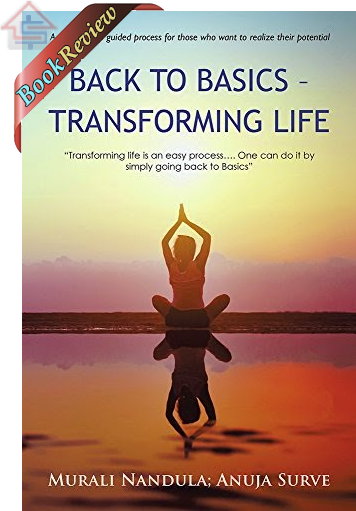 There comes a time in everyone’s life where we tend to glide towards being receptive to our inner voice. Some do it early, some a bit later. But, nevertheless the universe makes sure that we heed to our inner voice at least once in our lifetime.
There comes a time in everyone’s life where we tend to glide towards being receptive to our inner voice. Some do it early, some a bit later. But, nevertheless the universe makes sure that we heed to our inner voice at least once in our lifetime.
Popular media addresses such introspections as “stop to smell the roses” or “take stock of your life goals”. Those who have been-there-done-that on this self evaluating exercise will confirm that, the revelations have been life changing.
The author projects a project-management-approach to ‘a’ life. Should we consider every living being as a project, then the very life of the being is a project in progress. Even though he does not apply project management principles per se, you tend to see some striking similarities.
Self confessed reading enthusiast, and having read innumerable religious, philosophical and motivational texts, in the traditional and modern order, the author begins with the belief that the principles that govern our life can be classified under 6 major heads.
Murali Nandula also brings forth the stages of development (in the biological sense) such as the infancy, toddlerhood, adolescence, young adults, middle age, and the senior years. It appears that the intent was to philosophically attune the reader’s mindset with the traits specific to these growing stages. However, it gets a bit too literal and does not generate the desired effect. The anecdotes still make a great read.
After reading the book from cover to cover, I was left with an overwhelming feeling of having read a compiled version of an assumingly large volume of self-introspection-epic-saga. The references to the works of other philosophers (Maslow, Blanchard, Miller, Caslow, Muller & popular religion) overshadow the conclusive thoughts of the author. This is bad, because we don’t get to listen to the author’s voice, instead just popular quotes resonating into our minds. This is good, because very few of us can afford the luxury of time to quench the innate desire to read voraciously, while taking part in the rat-race that we call profession / business.
That said, I personally see an underlying message in the way Murali Nandula has gone about structuring this book. The way we live today, is but the compilation of experiences until yesterday, with the lessons for tomorrow. By quoting popular beliefs, cultures, religions and creations of other authors, the author emphasizes our innate urge to look back into our experiences of the past, derive lessons for tomorrow and act for today.
In a nutshell, the book, “Back to Basics – Transforming Life” by Murali Nandula & Anuja Surve gives a step by step DIY approach (with worksheets at the end of every chapter) to self-evaluation, to those in the fast lane, who cannot afford the luxury of time to read multiple authors on the same subject. After all, fast food is food too; and for some of us, this is survival-food. In that order, this book is a good start for time-strapped philosophy enthusiasts.